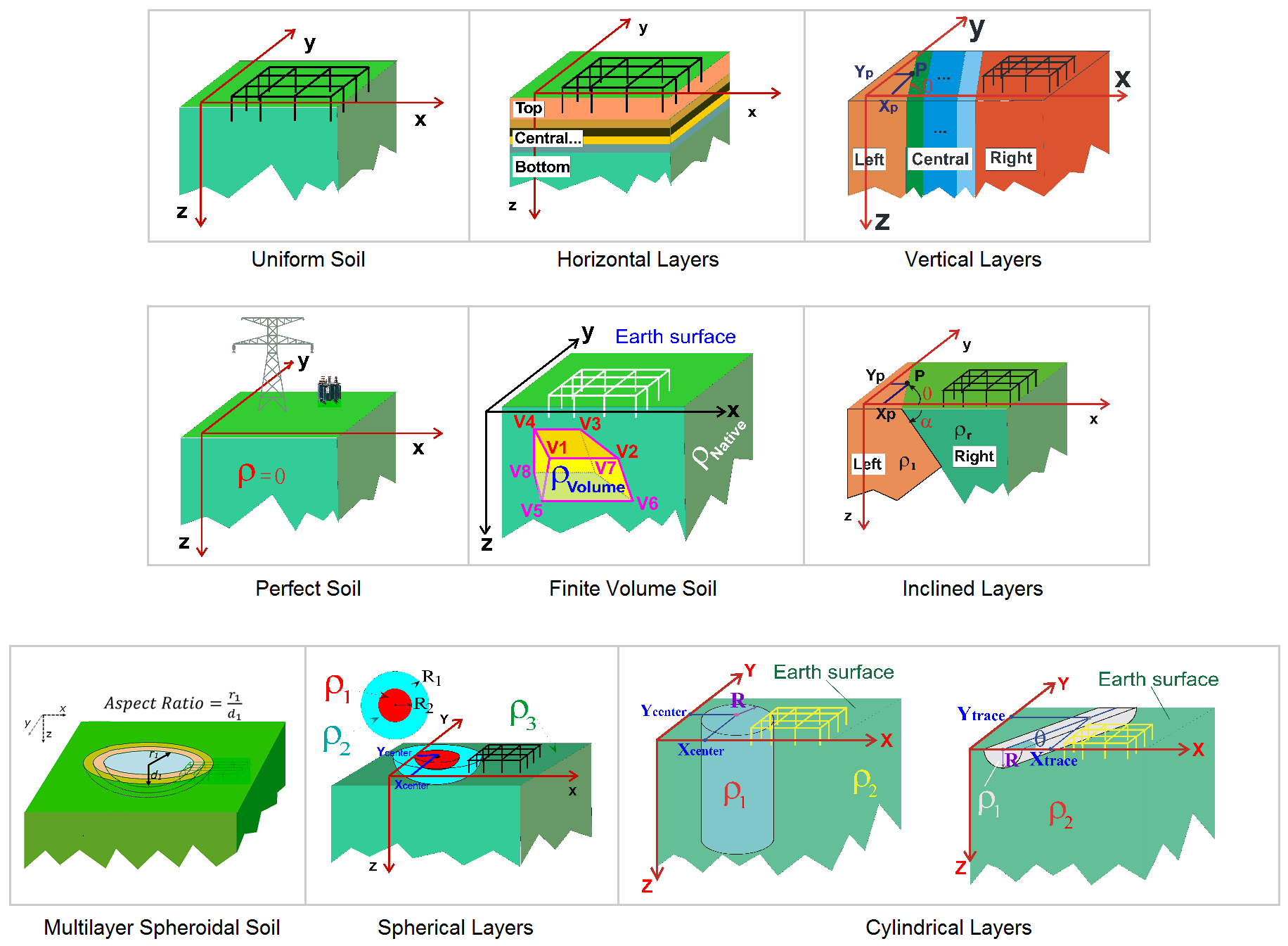MALZ
analyzes the frequency domain performance of buried conductor networks. This powerful grounding computation module is the ideal tool when metallic conductors cannot be approximated as equipotential structures and for scenarios where inductive effects are not expected to play a significant role.
MALZ
is one of the main components of the
MultiGroundZ
and
MultiGroundZ+
software packages.
Technical Description
MALZ
analyzes the frequency domain performance of buried bare and coated conductor networks and calculates the following quantities:
-
Longitudinal and leakage currents and the potential distribution in the conductor network.
-
Potential, electric field and conductive current density in the soil or at the earth surface.
-
Magnetic fields in the air.
Potential drops due to the self-impedance of conductors are accounted for in the
MALZ
computation module. Lumped electrical components (resistors, inductors or capacitors) can be inserted in the specified conductors. An arbitrary number of complex current, voltage, and GPR energizations and the induced EMF can be specified, and the circulating currents within the conductor network can be modeled.

Arbitrary grounding systems, pipelines and other bare or coated buried metallic structures can be energized by currents, voltages, GPRs fed via specific busses located aboveground.
Technical Highlights
MALZ
was specifically developed to investigate problems involving a network of conductors that cannot be considered equipotential (i.e., electrically large) energized at low and moderate frequencies or those with significant longitudinal impedances.
-
It is particularly suited for modeling extensive grounding systems and is an excellent tool for analyzing conductor networks energized by arbitrary electric sources at frequencies varying from zero to one MHz.
-
The conductors can be solid or hollow, coated or uncoated, and can be arbitrarily directed in different soil models.
-
The conductor system can be energized at different locations by complex valued currents, voltages or potentials (GPRs). Each source can independently inject a current, voltage or potential, which differs from other sources in both magnitude and phase angle.
-
You can also specify the potential of selected conductors, or the induced EMF or any other kind of longitudinal voltage source in any number of conductors. This can be particularly interesting when studying the behavior of a long grounded structure, such as a pipeline, that runs parallel to a power line.
-
It automatically determines intersections between conductors. Therefore, it determines which groups of conductors constitute distinct (energized or passive) systems.
-
Availability of multiple soil models with one, two or more horizontal or vertical layers. It is also possible to model soil structures with complex geometries, such as spherically or cylindrically layered soils, soils with an inclined layer or in the shape of layered spheroids (oblate or prolate), and soils with finite volumes of various resistivities, ideal for modeling substation backfill sites, dams, rivers or lakes, for example.
-
A working potential (i.e., electrochemical potential) can also be specified through the conductor type to define a
fixed voltage inserted in series between the metallic surface of the conductor and
its immediate environment (i.e. coating or earth).

Using
MALZ
, you can model vertical, horizontal, cylindrical, spherical, or spheroidal multilayered soils, soils with an inclined layer as well as embedded arbitrary finite volumes in uniform or horizontally multilayered soils.
Technical Features
MALZ
can be used to accurately conduct several types of scientific and engineering studies such as:
-
Analysis of large grounding systems in low resistivity soils.
-
Analysis of large HVDC electrodes for which the voltage drop along the ground conductors is significant.
-
Response of grounding systems subject to high frequency currents (third, fifth and higher-order harmonics).
-
Investigations related to the presence of pipelines (coated or not) or other similar metallic paths (rails, fences, etc.).
MALZ
can also analyze the effect of return electrodes (grounding systems where earth current partially returns to the generating sources).
-
Determination of the longitudinal (axial) and earth leakage (transversal) currents and potentials at each location in the grounding system (including return electrodes and metallic structures).
-
Determination of the electric field and conductive current density at pre-specified observation points in the soil or on its surface.
-
Determination of the magnetic field radiated by buried current-carrying conductors (coated or not). The magnetic field can be computed at any point above the earth surface.
-
Evaluation of the performance of cathodic protection schemes on corrosion-sensitive grounding systems.
-
Response of grounding systems to transient currents such as lightning or capacitive discharges.



